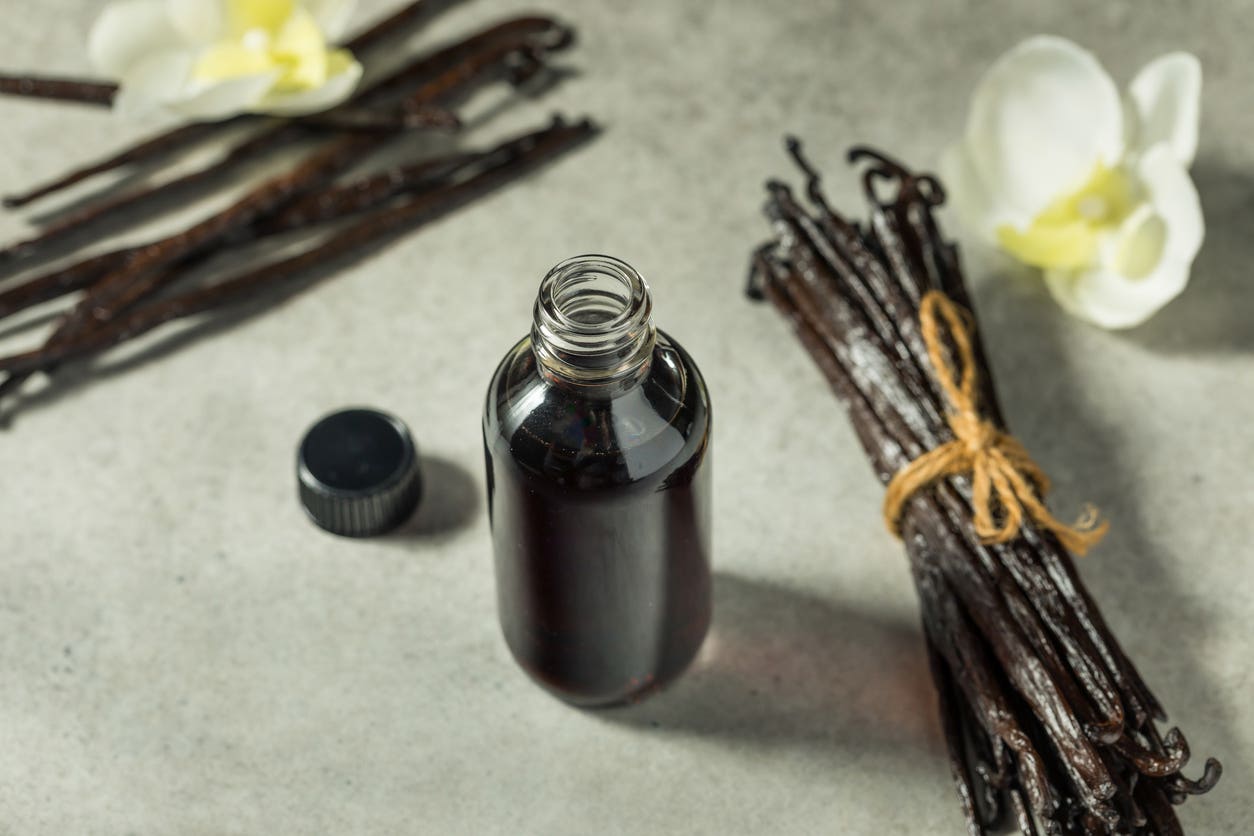
Vanilla Bean Powder vs. Paste vs. Extract: What’s the Difference?
Vanilla is a cornerstone of baking, but with so many options—extract, paste, powder, and whole pods—it’s easy to feel overwhelmed. Which one delivers the best flavor? Can you swap extract for paste, and what about the seeds? To help you make sense of it all, we turned to Vanilla Table author and chef Natasha MacAller. From choosing the purest products to smart storage tips (and why glass bottles matter), she shares her expert advice on getting the most out of this richly fragrant spice. Read on to discover everything you need to know about vanilla!
Vanilla Extract
Made by macerating whole vanilla beans in an alcohol or glycerin solution, pure vanilla extract is infused with pure vanilla flavor. “Packaging is very important,” cautions MacAller. “Look for dark glass bottles; plastic containers won’t protect the liquid from light and heat. They can also leach unwanted chemicals into the extract over time.”
MacAller also recommends buying double-strength vanilla when you can get it. “It’s the best value because it still has all the nuances and flavor of vanilla extract, but you only need half the amount.”
Vanilla Bean Paste
A little more processed, vanilla paste is made by blending vanilla seeds with xanthan gum so they are suspended in a clear gel that can be used exactly like vanilla extract. The paste is often mixed with vanilla extract and sugar to boost flavor, so MacAller advises seeking out “the cleanest paste you can find, with low or no added sugar or alcohol.”
Vanilla Bean Powder
Slow-dried whole vanilla pods are finely milled to make pure vanilla powder, an additive-free form of vanilla that is as easy to use as a 1:1 substitute for pure vanilla extract. “Vanilla powder is also great as a garnish and for use in recipes where you don’t want added liquid,” says MacAller.
Pods/Beans
Whole vanilla beans should be plump, shiny, and supple; avoid those that look dry or brittle. “And if you see beans that are dusted in white powder, those are the ones you want!” MacAller advises. “That powder is pure vanillin, the naturally occurring compound that is the strongest of the 250 aromatic compounds that make up vanilla. It’s the essence of vanilla flavor.” When using whole beans, wait until just before using to scrape the seeds from the pod. Simply slit the bean open lengthwise, and use a paring knife to scrape the interior seeds from the pod.
How Long Does Vanilla Extract Last?
“When you take good care of your vanilla and store it properly, it will last for years and years,” MacAller says. Vanilla extract, paste, powder, and bean pods should be kept tightly sealed and stored in a cool, dark, dry cupboard or drawer.
Vanilla Equivalents
Vanilla extract, paste, powder, and seeds can be used interchangeably in most recipes. Here are the equivalent amounts for each.
1 teaspoon pure vanilla extract
=
1 teaspoon vanilla bean paste
=
1 teaspoon vanilla powder
=
Seeds from 2-inch length of vanilla bean

About the Author

About the Author
Mary Margaret Chappell
Join our mailing list
Get free recipes and the latest info on living a happy, healthy plant-based lifestyle.
By providing your email address, you consent to receive newsletter emails from Forks Over Knives. We value your privacy and will keep your email address safe. You may unsubscribe from our emails at any time.